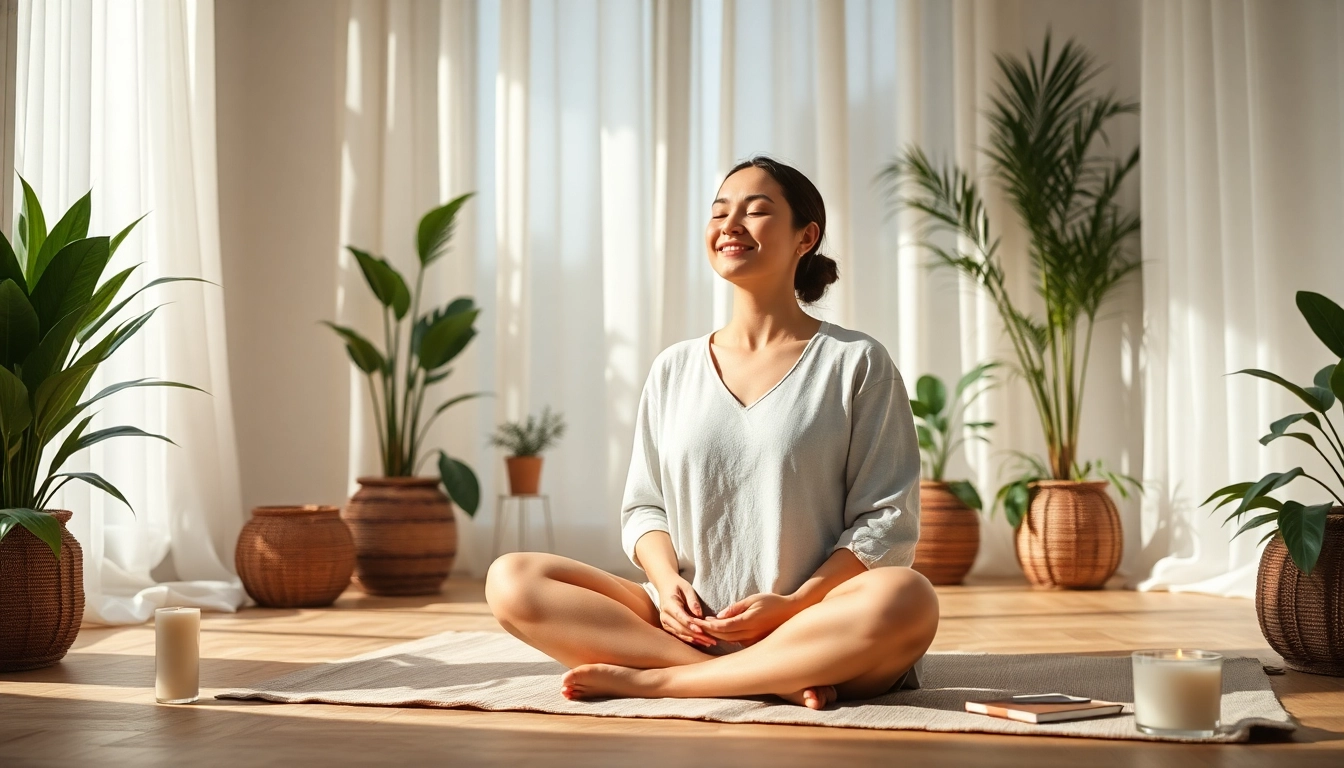
Understanding Anxiety: Causes and Symptoms
What is Anxiety?
Anxiety is a natural response to stress, characterized by feelings of worry, fear, and apprehension. Everyone experiences anxiety at certain points in their life; however, when these feelings become persistent and overwhelming, they may interfere with daily activities, leading to anxiety disorders. These disorders can manifest in various ways, including generalized anxiety disorder (GAD), panic disorder, and social anxiety disorder, each presenting unique challenges for those affected.
Common Causes of Anxiety
Anxiety can stem from a multitude of sources, both external and internal. Common causes include:
- Genetic Factors: Family history can play a significant role in one’s predisposition to anxiety disorders.
- Neurochemical Imbalances: Variations in brain structure and neurotransmitter levels can affect mood regulation.
- Life Events: Stressful or traumatic experiences, such as the loss of a loved one, divorce, or financial difficulties, can trigger anxiety.
- Health Issues: Chronic illnesses, or conditions that affect the body, can contribute to anxiety levels.
- Environmental Influences: Overwhelming situations, like work pressure or social conflicts, can amplify anxiety symptoms.
Recognizing Symptoms of Anxiety Disorders
Recognizing anxiety symptoms is crucial for effective management. Symptoms can vary based on the individual and their specific type of anxiety disorder but commonly include:
- Excessive worry about various aspects of life
- Restlessness or feeling on edge
- Fatigue and difficulty concentrating
- Physical symptoms such as a rapid heartbeat, sweating, or trembling
- Sleep disturbances, including insomnia or nightmares
- Avoidance of situations where anxiety arises
Coping Mechanisms for Dealing with Anxiety
Relaxation Techniques and Their Benefits
Relaxation techniques are powerful tools for managing anxiety. They can help calm the mind, reduce muscle tension, and promote a sense of well-being. Popular relaxation techniques include:
- Deep Breathing: Practicing deep breathing exercises can lower heart rate and reduce stress. Methods such as the 4-7-8 method encourage focused breathing, which has been shown to elicit a calming response.
- Progressive Muscle Relaxation: This involves tensing and then relaxing different muscle groups, helping to identify and release tension in the body.
- Meditation: Regular meditation can significantly lower anxiety levels by fostering a state of awareness and acceptance. Techniques like visualization and mindfulness meditation are particularly effective.
The Role of Physical Activity in Reducing Anxiety
Physical activity has a direct impact on mental health. Engaging in regular exercise increases the production of endorphins—natural mood lifters—and can serve as a distraction from negative thoughts. Studies suggest that:
- Cardiovascular Exercise: Activities like running, swimming, or cycling can help alleviate tension and enhance mood.
- Yoga: Incorporating yoga not only improves physical flexibility but also teaches mindfulness, providing tools to manage stress and anxiety.
- Consistency is Key: Aim for at least 30 minutes of moderate-intensity aerobic exercise most days of the week for optimal benefits.
Mindfulness and Meditation Practices
Mindfulness and meditation are practices that cultivate present-moment awareness, allowing individuals to acknowledge their feelings without judgment. Implementing these practices can have profound benefits, including:
- Acknowledgment of Emotions: Learning to observe emotions can lead to an understanding of triggers and responses associated with anxiety.
- Improved Focus: Regular practice can enhance concentration and emotional regulation.
- Accessibility: Mindfulness practices can be performed anywhere and at any time, making them flexible tools for managing anxiety throughout the day.
Professional Help: When to Seek Assistance
Types of Therapy for Anxiety Disorders
While self-help strategies are beneficial, seeking professional guidance can provide tailored support. Various therapeutic approaches include:
- Cognitive Behavioral Therapy (CBT): CBT is a structured program that aims to change negative thought patterns and behaviors associated with anxiety.
- Exposure Therapy: This form of therapy helps individuals gradually face their fears in a controlled environment, leading to desensitization.
- Dialectical Behavior Therapy (DBT): DBT integrates cognitive-behavioral techniques with mindfulness to enhance emotional regulation and interpersonal effectiveness.
The Importance of Support Groups
Joining a support group can provide comfort and insights from others facing similar challenges. Support groups offer:
- Shared Experiences: Members can share their stories and coping strategies, resulting in a sense of community and belonging.
- Resources and Information: Many groups provide access to educational materials and guest speakers.
- Accountability: Regular meetings can foster a commitment to personal growth and the pursuit of coping strategies.
Medication Options for Managing Anxiety
For some, medication may be a necessary component of a comprehensive treatment plan. Common classes of medications prescribed for anxiety disorders include:
- Antidepressants: Selective serotonin reuptake inhibitors (SSRIs) and serotonin-norepinephrine reuptake inhibitors (SNRIs) are frequently used to manage anxiety symptoms.
- Benzodiazepines: While effective for short-term relief, these medications come with dependency risks and are typically prescribed for brief use.
- Buspirone: This medication may be effective for chronic anxiety without the sedating effects of benzodiazepines.
Practical Tips for Managing Anxiety Daily
Establishing Healthy Routines
Creating a daily routine can provide structure and predictability, both of which are helpful in managing anxiety. Consider these strategies:
- Consistent Sleep Schedule: Aim for 7-9 hours of sleep each night and maintain a regular sleep-wake cycle to enhance emotional regulation.
- Nutritious Diet: A balanced diet that includes omega-3 fatty acids, antioxidants, and vitamins supports brain health and stabilizes mood.
- Time Management: Prioritize tasks and break them into manageable steps to prevent feeling overwhelmed.
Utilizing Journaling and Reflection
Journaling can serve as a constructive outlet for anxiety. Benefits of maintaining a journal include:
- Tracking Triggers: Documenting specific situations that provoke anxiety helps identify patterns and develop coping strategies.
- Emotional Release: Writing about feelings provides a safe space to express difficult emotions without judgment.
- Goal Setting: Setting achievable goals through journaling can provide direction and a sense of control over one’s life.
Techniques for Immediate Relief During Anxiety Attacks
Experiencing an anxiety attack can be overwhelming; however, there are quick techniques to provide immediate relief:
- Grounding Techniques: Focusing on the present moment through sensory exercises, such as noticing five things in your environment, can help divert attention from panic.
- Breathing Exercises: Simple breathing techniques, such as the 4-7-8 technique, can help reduce acute anxiety symptoms.
- Affirmations: Repeating positive affirmations can instill confidence and refocus thought patterns during an anxiety attack.
Future Outlook: Living with Anxiety Positively
Setting Realistic Goals
When dealing with anxiety, it is essential to set achievable goals that focus on personal growth rather than perfection. Some methods for setting goals include:
- SMART Goals: Ensure that your goals are Specific, Measurable, Achievable, Relevant, and Time-bound to foster success.
- Celebrate Small Wins: Acknowledge every step taken towards managing anxiety as a milestone, no matter how small.
- Flexibility: Be prepared to adjust goals as needed, being mindful that overcoming anxiety is a journey with variations.
Building Emotional Resilience
Emotional resilience is the ability to adapt to stressful situations and bounce back from them. To build resilience, consider the following:
- Developing Healthy Relationships: Foster connections with supportive friends and family to create a reliable support network.
- Practicing Self-Compassion: Treat yourself with kindness during difficult moments and recognize that it is okay to struggle.
- Engaging in Hobbies: Pursuing activities you enjoy can provide relief and promote a broader sense of fulfillment.
Resources for Ongoing Support
Maintaining mental wellness requires continuous support and resources. Consider the following options:
- Hotlines: Reach out to mental health hotlines available in your area for crisis support and guidance.
- Online Forums and Communities: Websites such as dealing with anxiety may offer additional support through forums where people share experiences and coping strategies.
- Books and Educational Resources: Engage with literature that focuses on anxiety management techniques and personal experiences.







